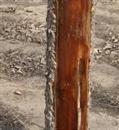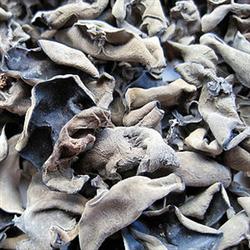Poplar bark rot

Distribution and harm of poplar skin rot, that is, poplar rot. Poplar cultivation areas occur in China, but they are mainly distributed in Northeast, Northwest, North China and other areas. It is a common and frequently-occurring disease of poplars in parks, green spaces, street trees and nurseries, which often causes a large number of street trees to die, especially the newly transplanted poplars. Symptomatic skin rot mainly occurs on the trunk and branches of poplar, showing two types of symptoms: dry rot and shoot withering. Dry rot mainly occurs on trunk and lateral branches. In the early stage of the disease, brown edematous plaque appeared, the cortical layer of the disease decayed and softened, and then water loss and subsidence occurred, sometimes cracking occurred, and the edge of the lesion was obviously dark brown. In the later stage, there are many needle-like protrusions on the lesion, the cortex of the disease is rotten, and the fibrous tissue is separated like hemp, which is easy to peel off from the xylem. Sometimes the rot is as deep as xylem, discoloring the sapwood. Under suitable conditions, the disease spot continues to expand, and when the disease part expands horizontally around the tree trunk for a week, the branches above the disease part will die. The withered tip type mainly occurs on the branchlets. The branchlets died quickly after infection, but there were no obvious symptoms of ulcer until orange filamentous conidia horns grew in the cortical cracks of the branches. The pathogen could grow in the range of 4 to 35 ℃, but the most suitable growth was 25 ℃. The most suitable pH value for mycelium growth is 4. The optimum temperature for conidia and ascospore germination was 25-30 ℃. The pathogens overwintered in the diseased tissue with hyphae, conidia and ascomycetes. In the following spring, overwintering spores are transmitted by wind, rain and insects, invading the host from various wounds or dead tissues. The incubation period is usually 6 to 10 days. Skin rot occurs from March to April every year, and the peak period is from May to June. Due to the different climatic conditions, the incidence of the disease will be slightly different sooner or later. The disease begins to be active in the middle and late March in Beijing and Tianjin, and later in Northeast China. The occurrence and prevalence of poplar skin rot are closely related to climatic conditions, host growth, cultivation and management measures and soil conditions. Prevention and control measures to implement reasonable cultivation and management measures to promote tree growth, enhance tree potential and improve disease resistance are effective means to prevent and control the disease. According to local conditions, poplar strains with strong adaptability are selected for greening and afforestation; pruning should be moderate, and cutting should be protected by medicine; the trunks of scenic forests and street trees should be painted white in spring and autumn to prevent sunburn and frostbite, and can also increase ornamental. Timely removal of dead branches and plants, combined with pruning to remove other withered branches or weakening plants and branches. At the initial stage of the disease, carbendazim or methyl topiramate 200 times solution, 50 units of internal therapy, 843 rehabilitation agent or 723 Shennong liquid can be used to smear the disease spot, all of which have good effect. If the disease tissue is scratched or scraped off with a knife before applying medicine, the prevention and treatment effect can be improved. 5 days after application, 50 to 100 times gibberellin is applied around the disease spot, which can promote the formation of healing tissue and prevent the recurrence of disease spot.
- Prev

Biological characteristics and High-yield cultivation techniques of Auricularia auricula
Timely harvest no matter spring ear, volt ear, autumn ear, should be harvested after the rain is clear and the ear piece is slightly dry. If the weather is dry, spray some water evenly in the evening of the first day of harvest and harvest after the dew is dry the next morning. Such fungus is not fragile. In case of continuous rainy weather, it must also be harvested, so as not to cause ear loss. Pass through.
- Next

Identification and control of poplar canker
The typical symptoms of poplar canker disease can be divided into two types: ulcer type and withered tip type. In the early stage of ulcerative disease, the infected trunk bark appears brown round or oval, showing waterlogged or blister-like disease spots, hand pressure means liquid outflow, after blister rupture, the liquid flows out with wine dregs, the disease part shrinks and sinks into ulcer spots, and the cortex of the lesions turns brown.
Related
- Fuxing push coffee new agricultural production and marketing class: lack of small-scale processing plants
- Jujube rice field leisure farm deep ploughing Yilan for five years to create a space for organic food and play
- Nongyu Farm-A trial of organic papaya for brave women with advanced technology
- Four points for attention in the prevention and control of diseases and insect pests of edible fungi
- How to add nutrient solution to Edible Fungi
- Is there any good way to control edible fungus mites?
- Open Inoculation Technology of Edible Fungi
- Is there any clever way to use fertilizer for edible fungus in winter?
- What agents are used to kill the pathogens of edible fungi in the mushroom shed?
- Rapid drying of Edible Fungi

